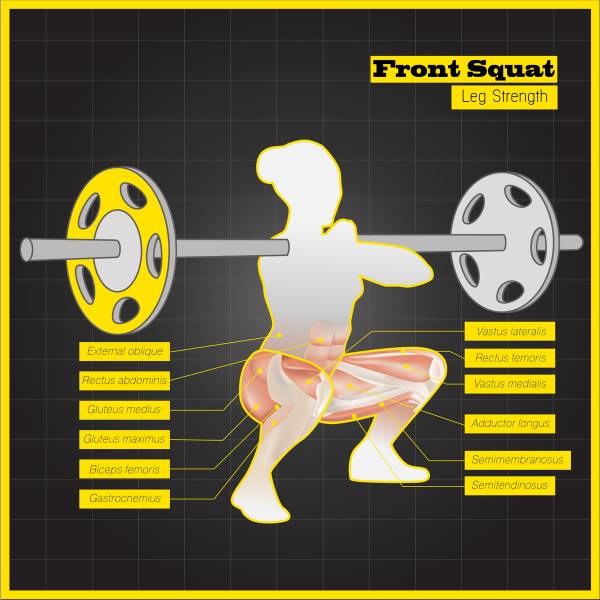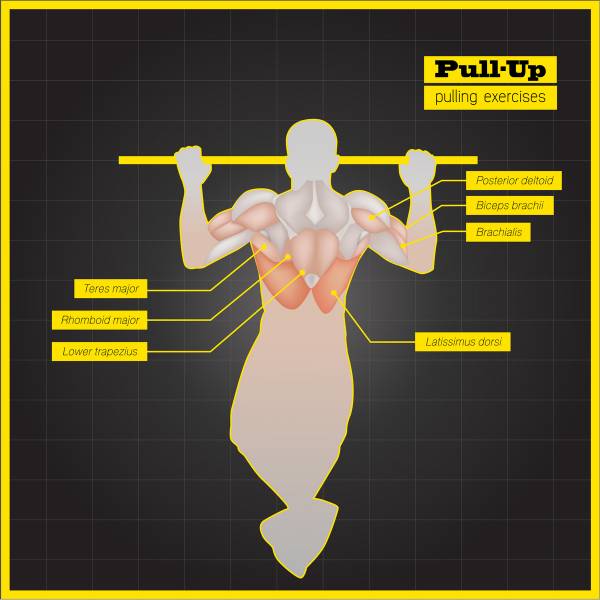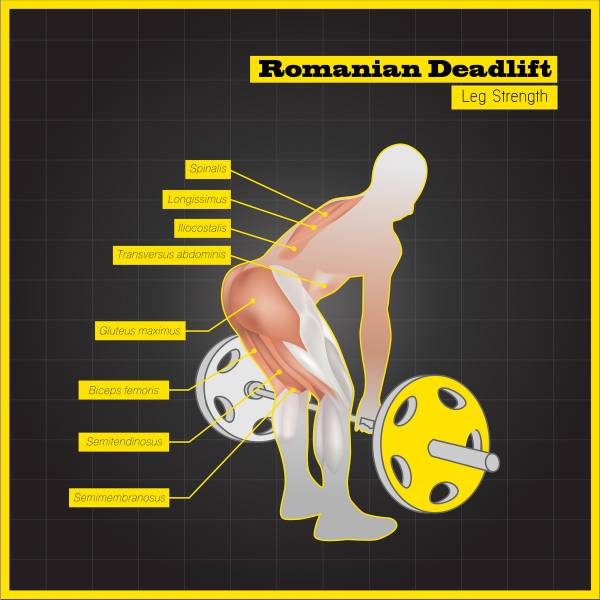While health and fitness magazines routinely recommend body part training splits, that style of training doesn’t lend itself particularly well to those of us who have extremely busy schedules. Fortunately, there is a very manageable alternative, and that’s full-body training.
Full-body workouts are the most time-efficient type pf workouts, and as such are absolutely perfect for those of us who can only get into the gym 2-3 days per week. And in all honesty, they are a fantastic way to see some gains even if you can get in the gym more than three times a week.
Unfortunately, full-body training splits are rarely utilized, being overlooked for cooler (read: flashier) body part training splits. As such, they are often considered for novice trainees alone, as a way to introduce them to a gym setting, and allow them to develop some capacity for general movement.
I won’t knock body part splits, as they can certainly be effective when used correctly. But full-body training routines can be used for so much more than an introduction to the gym. They can be a seriously effective way to build muscle and increase strength, while also stimulating an increased rate of fat loss.
What is Full-Body Training?
A typical full-body training program is followed 2-4 times per week. Every key muscle group is hit every single session. This may sound time consuming, but each muscle group is hit using only 1-2 exercises per session. This allows the session to be completed in a time-efficient manner (typically 60-90 minutes), and ensures that each individual muscle group is recovered in time for your next session (where it will be hit again).
Because we are only hitting each muscle group 1-2 times per session, it is incredibly important that we prioritize compound movements, as these allow us to maximize mechanical tension, which is a key driver for muscle growth, while also using the most amount of muscle mass.
Full-body training helps accelerate the results of our training due to the following reasons.
Increased Energy Expenditure
Because we are strictly using compound movements and training every muscle group each session, the amount of energy we burn each session is huge. There is a massive demand placed on the muscle tissue of the body, which increases not only the energy used during the session, but also the calories needed to recover from a given session.
Additionally, because we are alternating between upper body and lower body movements throughout the duration of the session, there is an increased cardiovascular demand placed on the body. This further increases energy expenditure.
These two factors can lead to an increased rate of fat loss over time, maximizing body composition changes in the smallest weekly time commitment possible.
Increased Training Frequency
Training frequency refers to the number of times we train a muscle group in a given amount of time. For example, using a body part training split, our training frequency of a given muscle group is usually once per week.
Muscle tissue takes approximately 24-72 hours to recover from a workout, dependent on the amount of work done. So increased training frequency is a great way to provide additional stimulus to a given muscle group without raising the risk of overtraining. Full-body training provides us with the opportunity to hit a particular muscle group 2, 3, or even 4 times in a given training week. This substantially increases the amount of volume that muscle group receives, which is a key driver for increased muscle growth.1
As a bonus, by increasing our training frequency, we also improve the amount of times we perform a given lift each week. This can increase the efficiency of our nervous system during the performance of that lift, which results in significant increases in strength.
Improved Recovery
Something that people tend to forget is that training itself doesn’t actually build bigger muscle tissue or cause increases in strength—the recovery from training does. If we don’t recover adequately from a given session, we won’t see any improvements from our training, and may actually regress as a result. If training continues without recovery, this pattern can even lead to overtraining.
But if we are only training 2-3 times per week, we gain additional rest days, which increase the time our body has to recover from a session. This can increase our ability to build new muscle tissue and increase strength. Moreover, this increased recovery should translate to increases in performance during our sessions, which may in turn lead to increased fat loss and muscle development.2
How to Program Full-Body Training
While the benefits of full-body training are apparent, implementation can be a little less straightforward. To build your full-body program, first remember that sessions should be built around movements, not muscle groups. In general, do this with large, compound movements to maximize work done per session.

The movements I typically program include:
- Knee dominant: squat variations, split squat variations
- Hip dominant: deadlift variations, single-leg deadlift variations, hip thrust variations
- Horizontal push: bench press, push ups, etc.
- Horizontal pull: bent over rows, dumbbell rows, face pulls, etc.
- Vertical push: overhead press, handstand push ups, etc.
- Vertical pull: pull ups, lat pull down, etc.

I then select one or two movements from each of these categories to build a well-balanced, full-body training program, which may look something like this:
- 1A: Front squat 4×5
- 1B: Pull ups 4×5
- 2A: Deadlift 3×8
- 2B: Weighted push ups 3×10
- 3A: Split squat 3×10/side
- 3B: Inverted rows 3×10
- 4A: Barbell overhead press 3×10
- 4B: Bent-over row 3×10

Add in some core work at the end, and you have a time-efficient, full-body program that you can implement immediately. As a bonus, by super-setting exercises (‘A’ and ‘B’ exercises in the above example), we can maximize work done in the limited time we have available, making the workout more efficient still.
It is important to note that this program will not be perfect for everyone (it has zero individualization), but does provide a good example of how to implement full-body training effectively. For those aiming to increase their Big 3, they are much more likely to prioritize the squat, bench and deadlift. For those who prefer bodyweight training, they can prioritize gymnastics movements.
Full-body training can be a fantastic way to change body composition and develop strength for those of us who are time restricted, and even those of us who aren’t!
The celeb on the cover of your magazine doesn’t have an answer for you:
The Fitness Trap: Tom Brady and Food Babes
References:
1. Bird, Stephen P., Kyle M. Tarpenning, and Frank E. Marino. “Designing resistance training programmes to enhance muscular fitness.” Sports Medicine 35.10 (2005): 841-851.
2. Tipton, Kevin, and Robert R. Wolfe. “Exercise, protein metabolism, and muscle growth.” International Journal of Sport Nutrition and Exercise Metabolism 11.1 (2001): 109-132.






